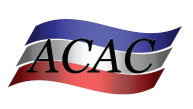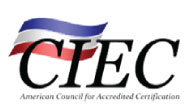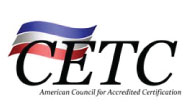Fungal Glossary – Frequently Encountered Water-Impact Genera
This is not a comprehensive list
ALTERNARIA sp.
This fungus is a large universally occurring genus. Several form-species are found as saprophytes on dead and dying plant parts. Conidia of this fungus are easily carried by the wind. Commonly found in house dust, carpets, textiles, and on horizontal surfaces in building interiors and is one of the main fungal causes of allergy. Outdoors, it may be isolated from samples of soil, seeds and plants, and is frequently reported in air. The large spore size suggests that the spores from this fungus will deposit in the nose, mouth and upper respiratory tract causing nasal septum infections. It has also been associated with hypersensitivity pneumonitis. It is a common cause of extrinsic asthma. Acute symptoms include edema and bronchospasms; chronic cases may develop pulmonary emphysema. Baker’s asthma is associated with inhalation of Alternaria conidia present in flour. Farmer’s lung type of allergy has also been reported recently. Other diseases caused by Alternaria include mycotic keratitis, skin infections, and osteomyelitis. Also, the species Alternaria alternata is capable of producing tenuazonic acid and other toxic metabolites that may be associated with disease in humans or animals. Several species of Alternaria are pathogenic to plants.
ASPERGILLUS sp.
There are more than 160 different species of Aspergillus, sixteen of which have been documented as etiological agents of human disease. These species are frequently isolated from forage products, grains, nuts, cotton, organic debris and water damaged organic building materials. The diseases caused by species of Aspergillus are relatively uncommon and are rarely occur in individuals with normally functioning immune systems. However, due to the substantial increase in populations of individuals with HIV, chemotherapy patients and those on corticosteroid treatment, contamination of building substrates with fungi, particularly Aspergillus are of concern. Aspergillosis is now the second most common fungal infection requiring hospitalization in the United States. In addition, this genus has been reported to be allergenic. Many species produce mycotoxins that may be associated with diseases in humans and other animals. Toxin production is dependent on the species or strain within the species and on the food source for the fungus. Some of these toxins are carcinogenic including aflatoxins and ochratoxin. Aspergillus is a common cause of extrinsic asthma with symptoms including edema and bronchospasms, and chronic cases may develop pulmonary emphysema. These fungi are frequently secondary opportunistic pathogens in patients with bronchiectasis, carcinoma, other mycosis, sarcoidosis and tuberculosis. Some species can also cause onychomycosis- infection of the nail.
AUREOBASIDIUM sp.
Saprophytic or weakly parasitic, common in soils. Indoors A. pullulans is often found on damp materials in homes, such as painted wood. A. pullulans has been reported to cause chromoblastomycosis (in an immunocompromised patient), which is a chronic cutaneous infection of the skin caused by species of dematiaceous fungi. Morphology is characterized by producing black and shiny colonies when old.
BOTRYTIS sp.
It is parasitic on plants and soft fruits. Found in soil and vegetables, also known as “gray mold”. Botrytis is known to cause allergies and induce asthma attacks.
CHAETOMIUM sp.
It is found on a variety of substrates containing cellulose including paper and plant compost. Several species have been reported to play a major role in decomposition of cellulose-made materials. These fungi are able to dissolve the cellulose fibers in cotton and paper and thus cause the materials to disintegrate. Chaetomium is reported to have type I & III allergens, and can produce sterigmatocystin, a mycotoxin shown to cause kidney and liver damage in laboratory animals. It is not a common human pathogen, but C. atrobrunneum, C. funicola, and C. globosum have been implicated in mycotic infections of the nails, skin, and brain and as agents of peritonitis.
CLADOSPORIUM sp.
- herbarum is the most frequently found species in outdoor air in temperate climates. It is often found indoors, usually in lesser numbers than outdoors. The dry conidia become easily airborne and are transported over long distances. This fungus is often encountered in dirty refrigerators, especially in reservoirs where condensation is collected. On moist window frames, it can easily be seen covering the whole painted area with a velvety olive-green layer. Cladosporium often discolors interior paint, paper, or textiles stored under humid conditions. Houses with poor ventilation, houses with thatched straw roofs and houses situated in low damp environments may have heavy concentrations of Cladosporium, which will be easily expressed when domestic mold is analyzed. It is commonly found on the surface of fiberglass duct liner in the interior of supply ducts. It is also found on dead plants, woody plants, food, straw, soil, paint, and textiles. The ability to sporulate heavily, ease of dispersal, and buoyant spores makes this fungus the most important fungal airway allergen; and together with Alternaria, it commonly causes asthma and hay fever in the Western hemisphere. It may also cause corneal infections and mycetoma, characterized by localized infections that involve cutaneous and subcutaneous tissue, fascia, and bone consisting of abscesses, granulomata, and draining sinuses, usually in immunocompromised hosts. Fungal colonies are powdery or velvety olive-green to olive-brown.
CUNNINGHAMELLA sp.
Commonly found as saprophyte in soil. Can cause disseminated and pulmonary infections in immunocompromised hosts.
EPICOCCUM sp.
It is commonly found as a secondary invader in plants, soil, grains, textiles and paper products where Cladosporium and Aureobasidium are present. It is mostly saprophytic, or weakly parasitic. Epicoccum is frequently isolated from air and occasionally occurs in house dust. Reported to be an allergen but not in a high frequency. Due to the ability of this fungus to grow at 37 degrees C, it can cause infection of skin in humans.
FUSARIUM sp.
Commonly found in soil, plants, grains, and often times it is found in humidifiers. This fungus is the most common cause of mycotic keratitis. This mold has been isolated from skin lesions on burn patients, nail infections, ear infections, varicose ulcer, mycetoma, osteomyelitis following trauma, and disseminated infection. This fungus produces very harmful toxins, especially in storage of infected crops. These toxins, known as trichothecene (scierpene) toxins, target the circulatory, alimentary, skin, and nervous systems. Fusarium can also produce 1) Vomotoxin on grains has been associated with outbreaks of acute gastrointestinal illness in humans. 2) T-2 Toxin and related trichothecenes are some of the deadliest known toxins. If ingested in sufficient quantity, T-2 toxin can severely damage the entire digestive tract and cause rapid death due to internal hemorrhage. 3) Fumonisin, commonly found in corn and corn based products, with recently outbreaks of veterinary mycotoxicosis causing “crazy horse disease”. 4) Zearalenone toxin which is similar in chemical structure to the female sex hormone estrogen and targets the reproductive organs. Morphological characteristics of this fungus include extensive cotton-like mycelium in culture, often with some tinge of pink, purple or yellow.
MEMNONIELLA sp.
Cellulolytic fungi very closely related to Stachybotrys. Both fungi have a worldwide distribution and often found together, and commonly found in soil. Recent studies on mycotoxins revealed that Memnoniella echinata can have toxicity similar to that of some isolates of S. chartarum. In terms of their chemical products, both S. chartarum and M. echinata produce phenyl spirodrimanes, but these two organisms differ in that the former produces macrocyclic and trichoverroid trichothecenes and the latter produces griseofulvins. Both produce varying amounts of simple trichothecenes. Thus, it is suggested that Memnoniella should also be considered potentially dangerous in indoor air. Also the aerodynamic diameter of Memnoniella is smaller and it would be expected to have an even greater potential to penetrate deep into lungs than the conidia of Stachybotrys.
MUCOR sp.
Often found in soils, dead plant material (hay), horse dung, fruits and fruit juice. It is also found in leather, meat, dairy products, animal hair, and jute. It is almost always in house dust, frequently in air samples and old dirty carpets. Wood chips and sawdust are often attacked by M. plimbeus causing “wood chips disease” and “furrier’s lung”. Accumulated dust in ventilation ducts may contain high concentrations of viable Mucor spores. Asthmatic reactions to Mucor have been described. It is a Zygomecete fungus that may be allergenic (skin and bronchial tests). It is an opportunistic pathogenic organism and it may cause mucorosis in immunocompromised individuals. The sites of infections are the lung, nasal sinus, brain, eye, and skin infection may have multiple sites.
PENICILLIUM sp.
A wide number of organisms belong to this genus. Identification to species is difficult. Often found in aerosol samples. Commonly found in soil, food, cellulose, paint, grains, and compost piles. It is commonly found in carpet, wallpaper, and in interior fiberglass duct insulation. Although this fungus is less allergy-provoking than the other molds, Penicillium is reported to be allergenic (skin) and it may cause hypersensitivity pneumonitis and allergic alveolitis in susceptible individuals. It can cause other infections such as keratitis, penicilliosis and otomycosis. Some species can produce mycotoxins including 1). Ochratoxin which is damaging to the kidneys and liver and is also a suspected carcinogen; may impair the immune system as well. 2). Citrinin that can cause renal damage, vasodilation, and bronchoconstriction. 3). Gliotoxin which is an immunosuppressive toxin, and 3). Patulin is believed to cause hemorrhaging in the brain and lungs, and is usually associated with apple and grape spoilage. It can also cause extrinsic asthma. P. camemberti has been responsible for inducing occupational allergies among those who work with soft white cheeses on which the fungus grows. P. chrysogenum has been found on building materials, including paints, chip boards and wallpaper.
RHIZOPUS sp.
Fungus found throughout the environment. It has been reported to be allergenic and it is often linked to occupational allergy. It may cause mucorosis in immunocompromised individuals. It may also cause zygomycosis (rhino-facial-cranial area, lungs, gastrointestinal tract, and skin). This disease is associated with the acidotic diabetes, malnourished children, severely burned patients, and other diseases such as leukemia and lymphoma, immunosuppressive therapy, or use of cytotoxins and corticosteroids. The fungi show a propensity for vessel invasion resulting in embolization and necrosis of surrounding tissue.
SMUTS
Ubiquitous, type I allergen. They are parasitic plant pathogens that require a living host. Most often found on corn, grass, weeds, flowering plants and other fungi; usually disseminated by wind.
STACHYBOTRYS sp.
Considerable recent media attention has been focused on the fungi Stachybotrys chartum due to infant deaths in Cleveland from pulmonary hemosiderosis which was believed to be associated with contamination of residences with this fungus. However, the CDC recently rescinded their position that Stachybotrys is related to hemosiderosis (March, 2000). Stachybotrys thrives on water damaged cellulose rich materials such as sheet rock, paper, ceiling tiles, cellulose containing insulation backing and wallpaper. The presence of this fungus in buildings is significant because of the mold’s ability to produce mycotoxins, which are extremely toxic, such as Satratoxin H. Exposure to these toxins can occur through inhalation, ingestion or dermal exposure. Symptoms include dermatitis, cough, rhinitis, nose bleeds, a burning sensation in the mouth and nasal passage, cold and flu symptoms, headache, general malaise, and fever. Inhalation of conidia may also induce pathological changes (pneumo mycotoxicosis). Satratoxin H has been reported to be abortogenic in animals and in high doses or chronic low doses it can be lethal. S. chartarum produces other macrocyclic and trichoverroid trichothecenes and, like Memnoniella echinata, produces phenyl spirodrimanes, which are immunosuppressive. Stachybotrys typically appears as a sooty black fungus occasionally accompanied by a thick mass of white mycelia. As a general rule, air sampling for Stachybotrys yields unpredictable results mainly due to the fact that this fungus is usually accompanied by other fungi such as Aspergillus and Penicillium that normally are better aerosolized than Stachybotrys.
TRICHODERMA sp.
Trichoderma is most commonly found in soil. It is often found in litter materials (polluted streams, sewage plants and driftwood), paper, and in kitchens on many common tableware materials. T. viridae is often isolated from indoor air samples and house dust. Materials such as wood construction and mineral fiber panels can be very affected by this fungus. Trichoderma sp. is reported to be allergenic but are relatively rare. Inhalation of the conidia or the volatile organic compounds, may cause symptoms similar to those of Stachybotrys reactions.
ULOCLADIUM sp.
This fungus is reported to be allergenic and considered cosmopolitan. It is commonly found as a saprophyte on plant materials and soils. Some species can be also found on dead herbaceous plants, rotten woods, paper, textiles, and other organic substrates (cellulose) such as water-damaged building materials. Ulocladium is also found in dust and air samples.
Information compiled by Aerotech Laboratories



